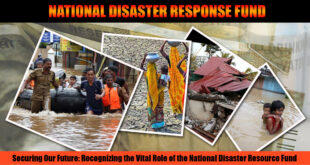- Action plans under Swacch Bharat amounting to ₹3226 crore of Central Share (CS) assistance on remediation of legacy waste dumpsites have been approved so far.
- Although the term “legacy waste” has not been defined in any official government
document in India, it typically refers to aged municipal solid waste in landfills or - There is no information on how old waste must be in order to qualify to be called legacy waste.
- Legacy waste is a mix of partially or completely decomposed biodegradable waste, plastic waste, textiles, metals, glass and other components.
Composition of legacy waste
- Typically, Indian dumpsites contain a mix of legacy waste and fresh municipal solid
- However, the composition and characteristics of legacy waste are different
from fresh municipal solid waste. - The vintage of a landfill considerably influences the composition of the legacy
waste it contains. - Usually, “fines” are the single-largest component of legacy waste.
- Fines in legacy waste are decomposed and mineralized organic waste
mixed with silt, sand and fine fragments of construction and demolition (C&D) - Fines constitute about 40–60 per cent of legacy waste.
- Environmental and health hazards
Landslides:
Open dumpsites or unscientific landfills are deemed to be closed when the landfill
reaches an unstable height and additional dumping of waste can lead to landslides.
Toxic leaching:
Unlined unscientific dumpsites produce toxic leachate that forms puddles in the surrounding area and seeps into the ground, polluting both surface-
water and groundwater resources.
Greenhouse gases:
- Such dumpsites also release greenhouse gases like methane.
- They are prone to dumpsite surface fires that result in rapid emission of dangerous pollutants into the atmosphere.
Legal framework and judicial interventions
- The Government of India has notified Solid Waste Management Rules, 2016 for proper and effective management of municipal solid waste.
- It defines the duties and responsibilities of local authorities and village panchayats of census towns and urban agglomerations for dumpsite remediation.
- They have to investigate all open dumpsites and existing operational dumpsites for their potential of biomining and bioremediation.
- If there is no potential for biomining or bioremediating a dumpsite, the Rules direct that it shall be scientifically capped as per landfill capping norms to prevent further damage to the environment.
- On July 17, 2019, the National Green Tribunal passed an order directing that capping of legacy waste would lead to huge environmental and health consequences.
- The tribunal suggested biomining and bioremediation as environmentally safe and the most preferable approaches to dumpsite remediation
SOURCE: THE HINDU, THE ECONOMIC TIMES, PIB
 Chinmaya IAS Academy – Current Affairs Chinmaya IAS Academy – Current Affairs
Chinmaya IAS Academy – Current Affairs Chinmaya IAS Academy – Current Affairs



